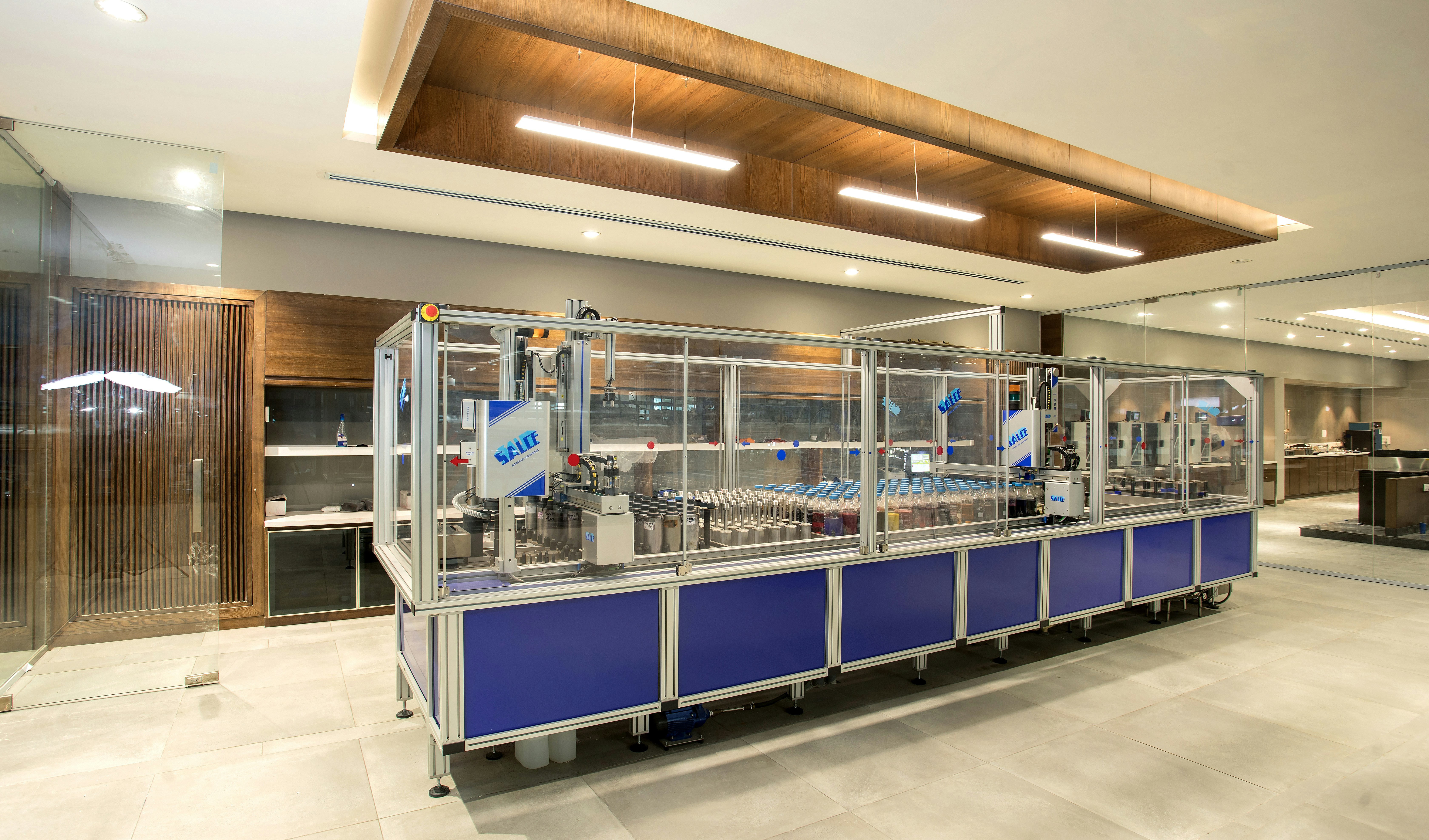In today’s fast-paced global economy, efficient logistics are paramount for business success. Companies constantly seek innovative ways to streamline operations, reduce costs, and enhance customer satisfaction. This is where Six Sigma Applications in Logistics emerge as a game-changer. By applying its data-driven, systematic approach, businesses can identify and eliminate inefficiencies, leading to significant improvements across the entire supply chain.
Table of Contents
- What is Six Sigma in Logistics?
- Key Principles of Six Sigma Applied to Logistics
- Unlocking Efficiency: Six Sigma Applications in Logistics
- Tangible Benefits of Implementing Six Sigma in Logistics
- Challenges and Success Factors
- Conclusion
What is Six Sigma in Logistics?
Six Sigma is a disciplined, data-driven approach and methodology for eliminating defects (driving towards six standard deviations between the mean and the nearest specification limit) in any process – from manufacturing to transactional and from product to service. In the realm of logistics, it translates to optimizing the flow of goods, information, and funds from the point of origin to the point of consumption. It’s about achieving near-perfect quality and efficiency in every logistical operation, ensuring that goods are delivered on time, in full, and without error. The comprehensive framework provided by Six Sigma Applications in Logistics helps managers make informed decisions based on empirical data, rather than assumptions, leading to more robust and reliable supply chains. It’s not just about speed; it’s about consistency and quality.
Key Principles of Six Sigma Applied to Logistics
The core of Six Sigma lies in its DMAIC methodology: Define, Measure, Analyze, Improve, and Control. Each phase plays a crucial role in transforming logistics processes.
Define Phase
In the Define phase, the logistics problem or project objective is clearly articulated from the customer’s perspective. For instance, high shipping costs or delayed deliveries are identified. Key stakeholders are engaged, and project boundaries and goals are set. This initial step ensures everyone understands what needs to be achieved and why.
Measure Phase
The Measure phase involves collecting data on the current process performance. This could include tracking delivery times, error rates, inventory turnover, or transportation costs. The goal is to quantify the problem and establish a baseline against which improvements will be measured. Accurate data collection is vital for identifying true root causes.
Analyze Phase
During the Analyze phase, the collected data is scrutinized to identify the root causes of defects or inefficiencies. Statistical tools are often used to uncover relationships between variables and determine what factors contribute most significantly to the problem. For example, analysis might reveal that specific routes or warehouse layouts are causing bottlenecks.
Improve Phase
The Improve phase focuses on developing and implementing solutions to address the identified root causes. This might involve re-engineering processes, implementing new technologies, or optimizing resource allocation. Pilot programs are often conducted to test the effectiveness of proposed solutions before full-scale deployment. The aim is to eliminate or significantly reduce the defects.
Control Phase
Finally, the Control phase establishes mechanisms to sustain the improvements over time. This includes implementing monitoring systems, standardizing new procedures, and developing control plans to prevent regression. Regular audits and performance reviews ensure that the improved processes remain stable and continue to deliver benefits. For more information on quality management, visit Wikipedia’s Six Sigma page.
Unlocking Efficiency: Six Sigma Applications in Logistics
The practical Six Sigma Applications in Logistics span a wide array of operational areas, driving measurable improvements and significant cost savings. Here are some prime examples:
Inventory Management
Six Sigma can optimize inventory levels by analyzing demand variability, lead times, and carrying costs. By reducing excess inventory and minimizing stock-outs, companies can free up capital and improve service levels. This includes implementing strategies to reduce forecast errors and improve the accuracy of stock counts.
Transportation Optimization
Applying Six Sigma to transportation involves analyzing routes, fleet utilization, fuel consumption, and delivery times. The goal is to minimize transit costs, reduce carbon footprint, and improve on-time delivery performance. This might involve optimizing load consolidation or selecting more efficient modes of transport.
Warehouse Operations
Within warehouses, Six Sigma can streamline picking, packing, and shipping processes. It helps in optimizing warehouse layout, reducing movement waste, and improving picking accuracy, leading to faster order fulfillment and fewer errors. Process mapping and value stream mapping are common tools here.
Order Fulfillment Accuracy
Errors in order fulfillment lead to customer dissatisfaction and costly returns. Six Sigma helps identify the root causes of these errors, whether they are human mistakes, system issues, or communication breakdowns, and implements robust solutions to achieve near-perfect order accuracy.
Supplier Relationship Management
Six Sigma principles can be extended to supplier management by evaluating supplier performance, reducing variability in inbound logistics, and fostering stronger, more reliable partnerships. This ensures that raw materials and components arrive on time and meet quality specifications, preventing disruptions further down the supply chain.
Tangible Benefits of Implementing Six Sigma in Logistics
Implementing Six Sigma in logistics yields a multitude of benefits that directly impact a company’s bottom line and competitive advantage. These benefits include significant cost reductions, enhanced operational efficiency, and improved customer satisfaction. The successful adoption of Six Sigma Applications in Logistics can transform various facets of supply chain management, as detailed below.
| Benefit Category | Typical Six Sigma Impact | Example Metric |
|---|---|---|
| Cost Reduction | 15-30% reduction in operational costs | Reduced fuel consumption, lower inventory holding costs |
| Efficiency Improvement | 20-50% reduction in cycle times | Faster order processing, quicker delivery times |
| Quality Enhancement | 99.9% defect reduction (e.g., shipping errors) | Fewer mis-shipments, higher perfect order rate |
| Customer Satisfaction | Increased on-time delivery and accuracy | Higher Net Promoter Score (NPS), fewer customer complaints |
By systematically identifying and eliminating waste and variations, businesses achieve leaner operations and higher service levels. This proactive approach not only solves current problems but also builds a culture of continuous improvement, making Six Sigma Applications in Logistics an invaluable asset.
Challenges and Success Factors
While the benefits are clear, implementing Six Sigma in logistics is not without its challenges. These can include resistance to change, lack of leadership commitment, or insufficient training. However, success can be achieved by ensuring strong executive sponsorship, providing comprehensive training, fostering a data-driven culture, and integrating Six Sigma with existing management systems. Starting with pilot projects and demonstrating early successes can build momentum and buy-in, ensuring effective Six Sigma Applications in Logistics.
Conclusion
The strategic deployment of Six Sigma Applications in Logistics offers a powerful pathway to operational excellence and sustainable competitive advantage. By embracing its rigorous, data-driven methodology, organizations can significantly improve efficiency, reduce costs, enhance quality, and ultimately deliver superior value to their customers. As the global supply chain continues to evolve, the principles of Six Sigma will remain indispensable for navigating complexity and achieving peak performance. To learn more about optimizing your internal processes, consider exploring our guide to Lean Manufacturing principles.


